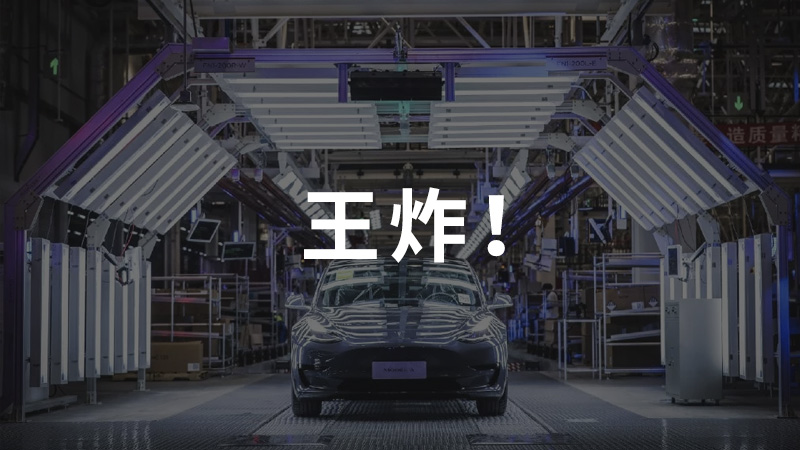20 minutes ago, Tesla’s official website announced the subsidized price of the domestic Model 3 rear-wheel drive long-range version, which is 339,050 yuan; the pre-subsidy price of the domestic Model 3 Performance high-performance version is 419,800 yuan; the price of the domestic Model 3 standard range upgrade version remains unchanged. The car paint color has been adjusted to black for free, and other colors are optional at 8,000 yuan extra cost.
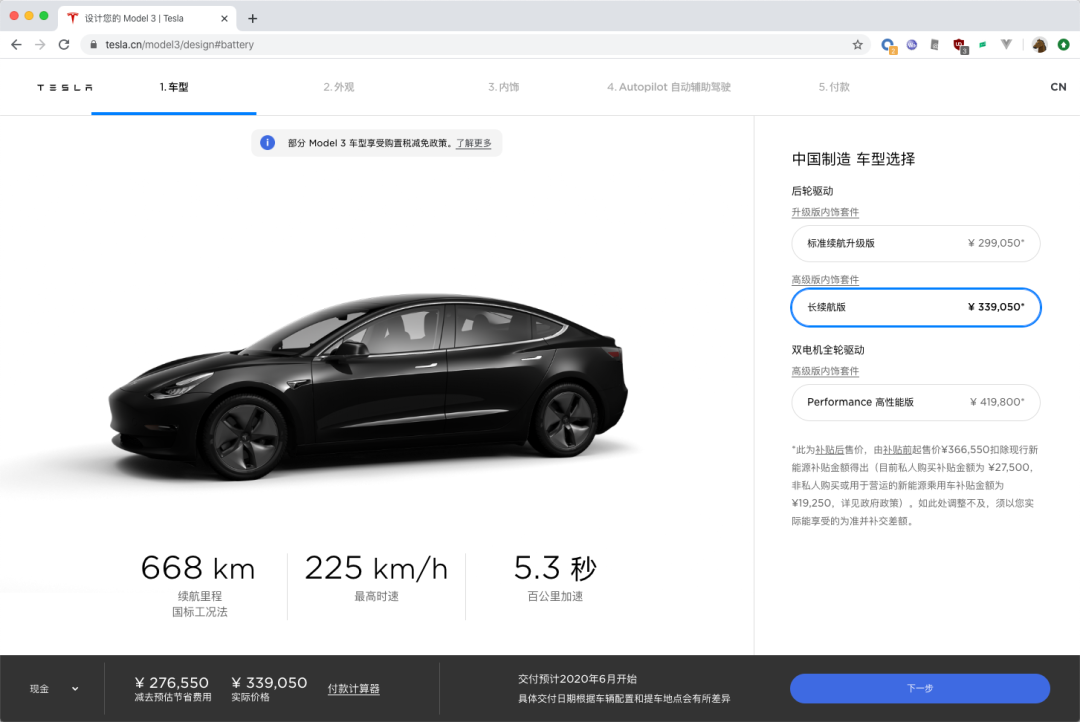
From Tesla’s official website
Last night after 8:00 PM, the news was already flying around. And a few days ago, we also predicted that Tesla will announce the long-range version’s launch on Friday morning. This is because the historical announcement time of Tesla’s sales policy is mostly concentrated on Fridays, and between 10-12 AM.
Let us look back at the historic moment of the domestic Model 3.
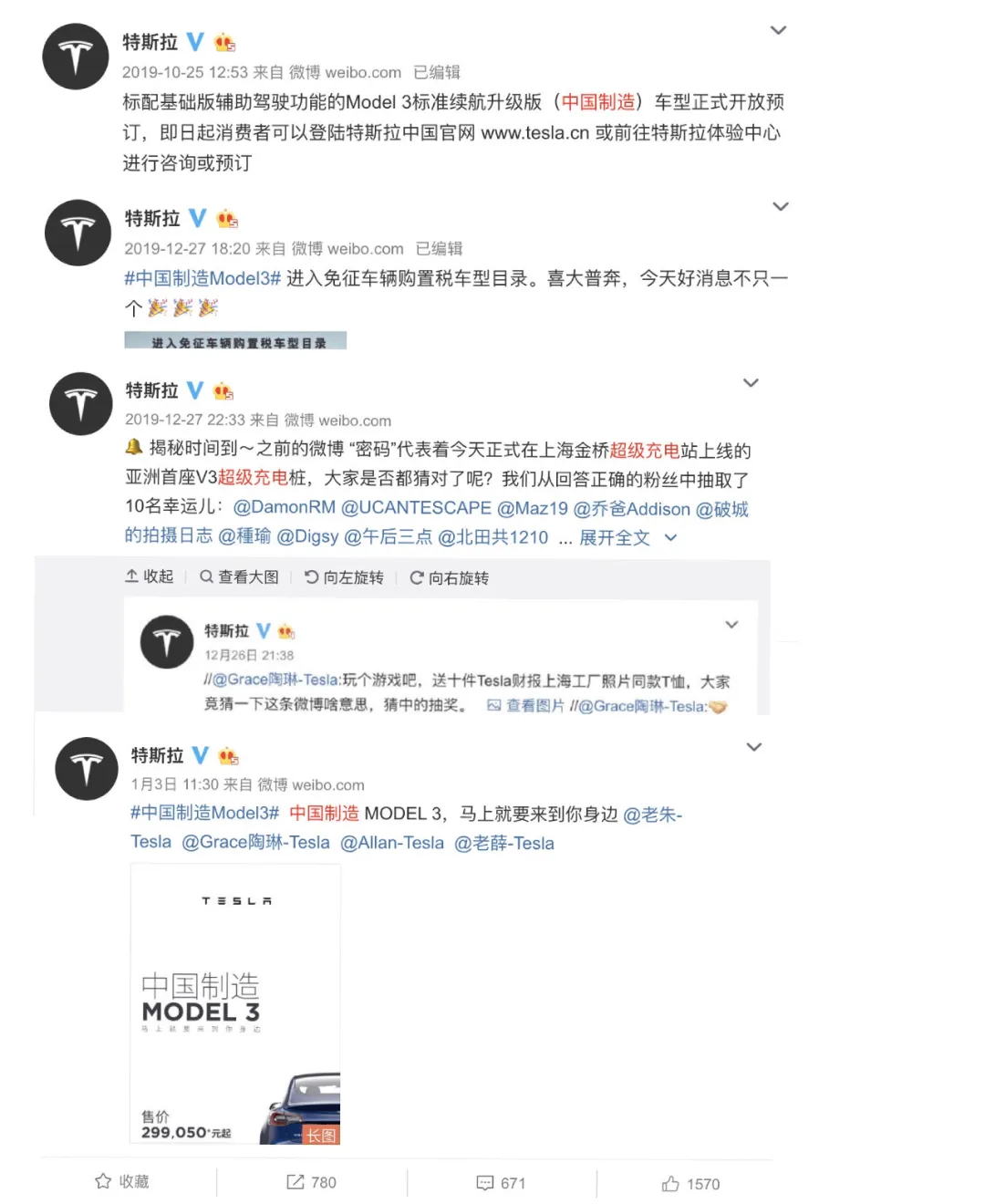
The same imported Model 3 rear-wheel drive long-range version, sold for 421,000 yuan 9 months ago, which means domestic car owners can buy the same model for 82,000 yuan less. For users who have been paying attention to Tesla for a long time, 339,050 yuan has no hesitation. The answer is one word, buy! Yes, this is the day when the “waiting party” won a significant victory.
However, our focus today is not on the “waiting party,” but on the fact that with the March sales of the domestic Model 3 exceeding 10,000 units (China Association of Automobile Manufacturers data), Tesla has undoubtedly entered the moment of competing head-to-head with fuel vehicles. Although this moment will come sooner or later, it has arrived much earlier than we expected. Therefore, on the day when the domestic Model 3 long-range version’s subsidized price dropped to 339,050 yuan, we want to explore one question: How much advantage does Tesla have compared to BBA’s fuel vehicles?
How powerful is Tesla?
Let’s first “fight” performance. The models in the 300,000-350,000 yuan price range in BBA all use 2.0T low-power engines or 1.5T engines, with a maximum output power of 130-140 kW and a maximum torque of 280-320 N·m. In many people’s eyes, nearly 200 horsepower and over 300 N·m of maximum torque are already a commendable performance. However, if we apply this data to electric cars, it is really miserable.To better demonstrate the performance gap, we will use a simplest and crudest data for comparison. The acceleration of Long Range Rear-Wheel Drive Model 3 is 5.2 seconds per 100 kilometers, while BMW 325 Li, Mercedes-Benz C260, and Audi A4L have acceleration of 7.3 seconds, 8.3 seconds, and 7.9 seconds respectively, which is a lead of more than 2 seconds.
If you think that electric cars are just foolishly fast, then you are completely wrong. In track tests by domestic and foreign media, Model 3 has also shown extremely powerful cornering performance.
These are just parameter suppression. The characteristic of electric motors with faster response speed and wider torque output also greatly improves the actual driving experience, especially in terms of response speed. Even the highly acclaimed ZF 8-speed automatic transmission is no match for the electric motor.
Therefore, in terms of performance, Model 3 “electric car”, compared with “fuel car” BBA of the same level, has already reached a higher dimension.
Next, let’s talk about intelligence. We have two points to make.
First, compared with BBA, Model 3 has the whole vehicle OTA function. If you don’t understand what OTA is and what it can do, it doesn’t matter. This is a summary of all major OTA content for Tesla in 2019.
In just one year, Tesla Model 3 has improved its acceleration performance, added multiple practical or entertainment features through OTA. In a word, under OTA, cars have the ability to grow. The Model 3 seen one year ago and the one seen one year later are already two different cars.
Second, Tesla has Autopilot assisted driving. Although more and more traditional models are beginning to equip L2 assisted driving, these assisted driving devices are not only extremely expensive, but their actual performance is also lacking. The difference between Tesla’s Autopilot and other assisted driving devices is that it has stronger capabilities and gives stronger sense of security.
During the recent Qingming holiday, I drove Model 3 for two long-distance trips of over 400 kilometers. The usage rate of assisted driving on expressway was over 90%. The biggest difference between Autopilot and other assisted driving devices is its stronger ability and the stronger sense of security it gives.
Finally, let’s talk about the cost of use. This is also a well-known advantage of electric cars, but this time we have sorted out the data and given it to you.We have selected the most popular configurations of Audi A4L, BMW 3 Series, and Mercedes-Benz C-Class. Although Model 3 is still higher than BBA in terms of purchase price, if the ownership time is extended to 100,000 kilometers, the total ownership cost of the vehicle has reached the same level as BBA.
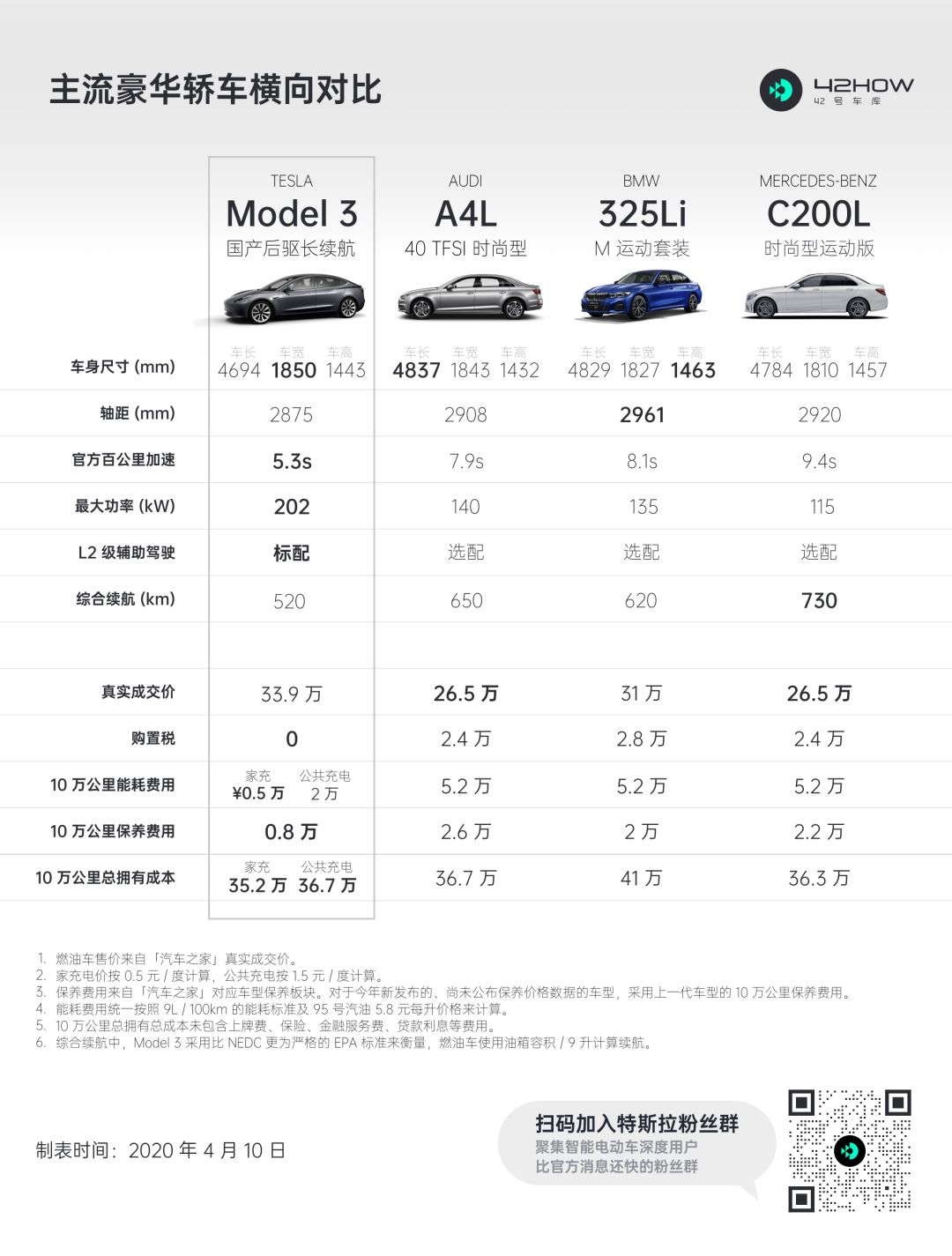
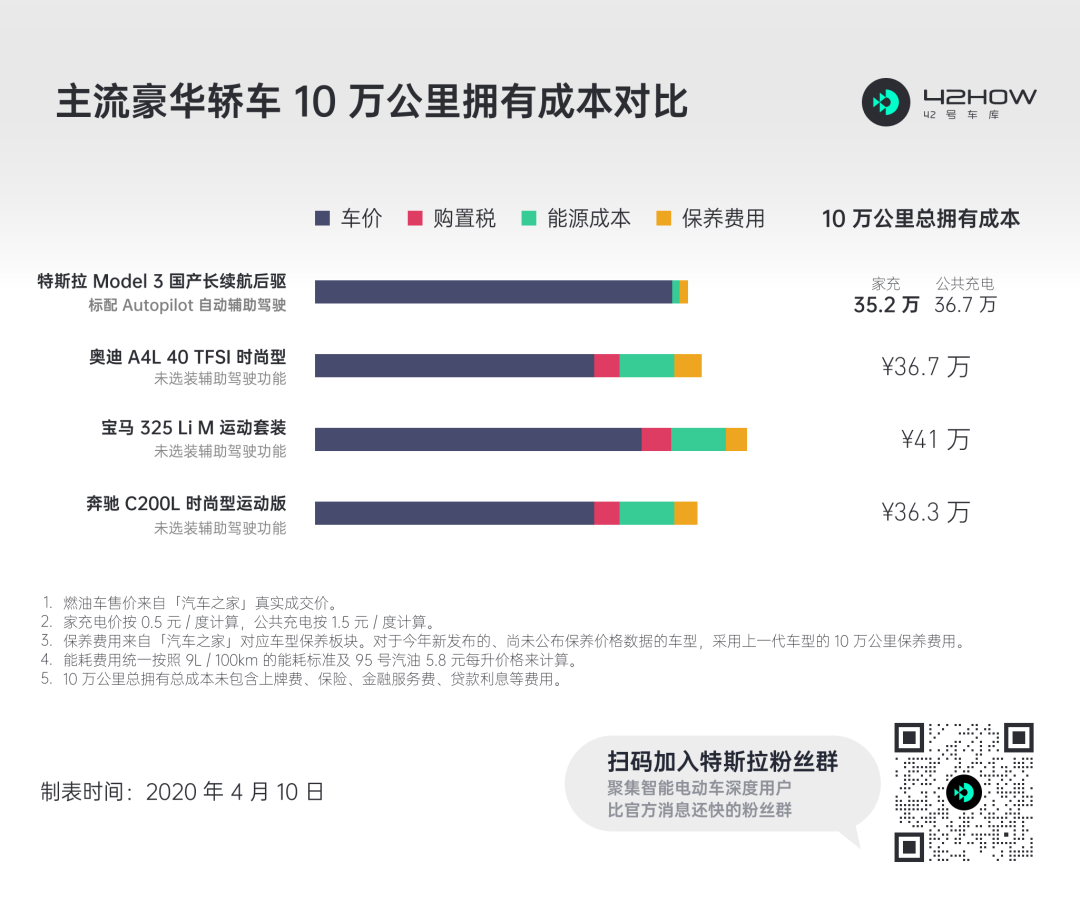
Although the price and usage cost of the domestically produced Model 3 have surpassed the same level and same price fuel vehicles, many people may still point out the problem of low residual value of electric vehicles. However, with the advent of domestically produced long-range Model 3, it will completely overturn the situation of low residual value of electric vehicles.
Why is that?
Everyone knows that a few years ago, the value of second-hand electric vehicles purchased was so low that they were barely marketable, and nobody wanted them at all.
The main reason for this is that the range of the electric vehicle at that time was only about 200 km, and now, for the same price, not only can the range easily reach 500 km, but also the driving experience and the quality of the vehicle have been qualitatively improved. Therefore, early electric vehicles have no purchasing value now.

In contrast, Tesla’s Model S 85 NEDC, which was launched in 2014, has a range of 502 km, and even today, six years later, this range level has not fallen behind.
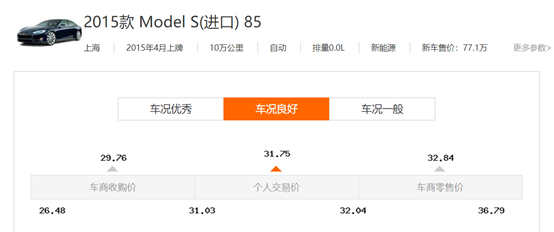
According to data from the well-known second-hand car valuation platform “Che 300”, the second-hand value of the Model S 85 purchased in 2015 is about RMB 320,000, and the residual value rate is about 35% calculated based on the landing price of about RMB 900,000 at that time.
Let’s look at another set of data.
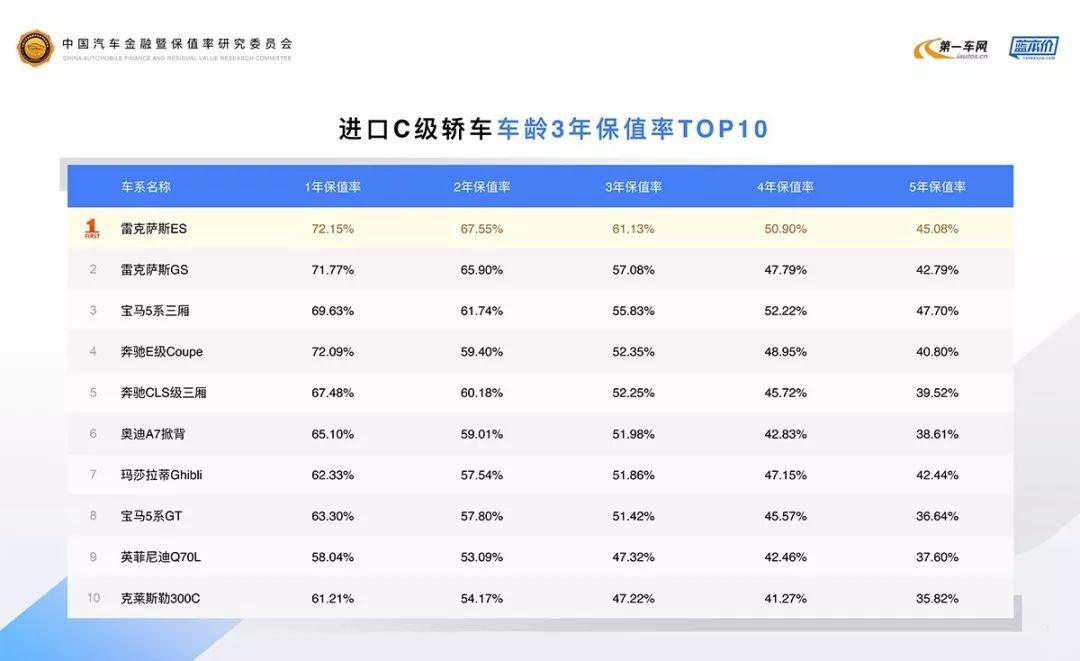
Source: 2019 China Auto Residual Value Research Report-China Auto Financial and Residual Value Research CommitteeIt’s obvious that the resale value of Model S is far less than that of Lexus ES and BMW 5 Series, but compared to those “industrial garbage” electric vehicles, its resale value is much better.
However, Tesla’s current resale value is not high enough, and there are two reasons for this:
- The high price of Model S/X itself and the small audience are not conducive to the sale of used cars;
- It is simply because Tesla has shot itself in the foot, especially at the beginning of 2019, the tariff issue caused a huge price cut, and at the end of last year, the entire series was exempt from vehicle purchase tax, so new cars were greatly reduced in price, making it difficult for used cars not to depreciate.
But the domestically-produced Model 3 Long Range is completely different.
- First of all, its NEDC range has reached 668 km, which is still one of the longest range models in the current market. This range can fully meet the travel needs of most people, and the range of electric vehicles will not continue to develop indefinitely, so the impact of the future development of electric vehicle ranges on the domestically-produced Model 3 Long Range is relatively small.
- The price of domestically-produced Model 3 Long Range is not much more expensive than that of comparable gasoline vehicles. If the total life cycle cost is taken into account, it may even be lower. It has already entered the public’s consumption field of vision. The sales of domestically-produced Standard Range Plus version of Model 3 has already proven this point, and the domestically-produced Model 3 Long Range will only be even better.
As more and more people accept the domestically-produced Model 3 Long Range, the circulation of used cars will also become better, and the resale value will inevitably become similar to those of traditional gasoline cars.
In addition, as to the issue of the domestically-produced Model 3 Long Range’s short-term drastic price reduction, I believe it will not happen again (for the veteran investors, you have worked hard), and we will explain the specific reasons later. Therefore, the problem of new car price reduction causing used car depreciation will no longer exist.
Why is domestically-produced Model 3 Long Range Tesla’s “achieving a sudden victory” product?
Let’s first look at the sales data of domestically-produced Standard Range Plus version of Model 3 in January to March released by the China Passenger Car Association.
In January, the sales volume was 2,620, in February it was 3,900 (estimated), and in March it was 10,160. Since the delivery of the domestically-produced Model 3 three months ago, there has been a significant increase in sales each month, of which the sales in March was the most terrible, with a MoM growth of 160.5%. After the news of the March sales came out, our Weibo comment section exploded.
From people’s reactions, many did not expect that domestically-produced Model 3 can sell so well, especially in March during the epidemic period.Thus, the influence of Model 3 goes beyond everyone’s imagination, and behind this influence is reflected in its sales volume. After this wave, all traditional automakers have probably become restless. They will be more certain of their transformation direction and will make greater efforts to focus on pure electric vehicles.
However, after the arrival of the rear-wheel drive long-range version, other companies can only look on with envy. If the standard range is already impressive, what about the long-range version?
In addition, not only have we received news from the sales end, but also from the user end, where a large number of intended owners who have deposited money are waiting for the domestic rear-wheel drive long-range version, and some users are ready to return the standard range and directly switch to the long-range version.
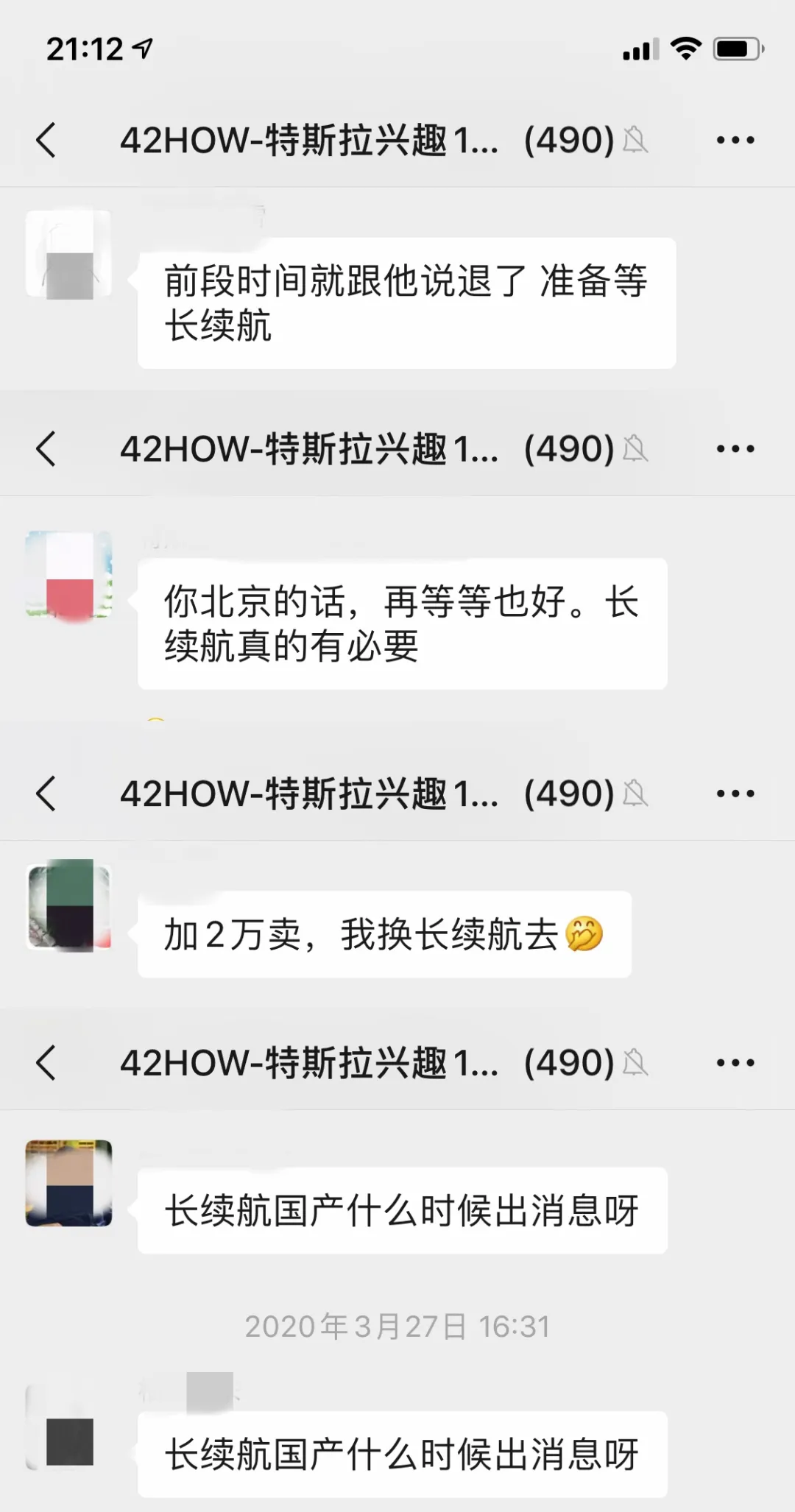
Furthermore, Han Lu, the co-founder of Lao Si Ji (a popular Chinese automotive vlogger), also expressed his opinion on Weibo, stating, “I will definitely wait for the domestically-produced long-range version,” and emphasized it three times.
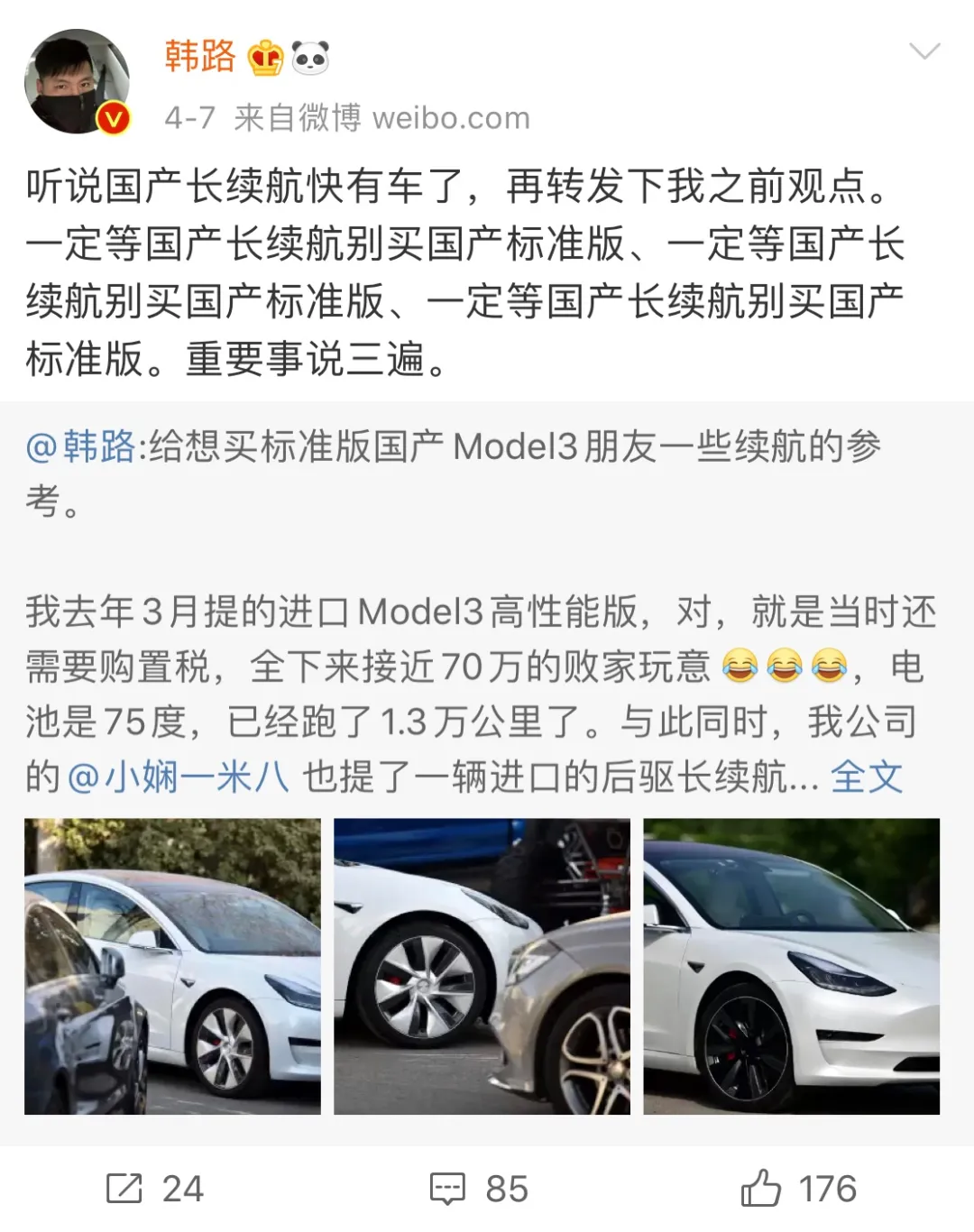
Therefore, we have reason to believe that the long-range version of Model 3 has greater potential for sales growth. At a higher level, the domestically-produced rear-wheel drive long-range version will further help Tesla make history.
For Tesla, the bottleneck of sales is not demand, but production capacity.
About price cuts
Some friends may say that Tesla’s prices are not stable, and they often jump up and down, making it difficult to protect consumers’ rights.
Regarding this issue, we already have an answer. The long-range version is not expected to be reduced in price in the short term.
We can review the price reduction history of the imported Model 3 from last year.
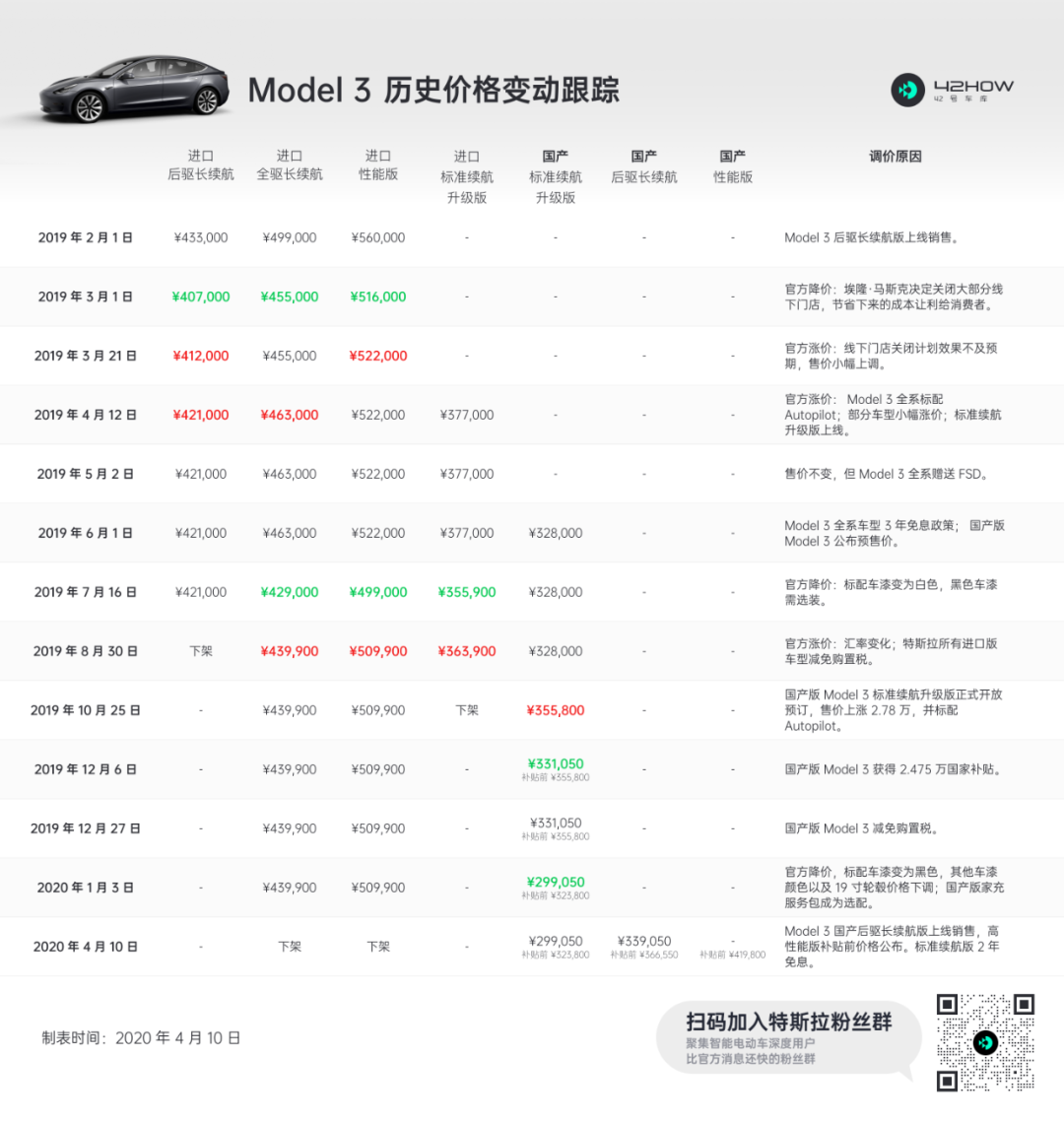
First, let’s focus on the imported long-range version. From the chart, we can see the first price cut came one month after Model 3 went on sale, with a decrease of 26,000 yuan. This price cut was the largest.
The fundamental reason is that Musk decided to close most offline stores and pass on the cost savings to consumers. However, this effect was not fully realized, and the closure of stores was less effective than expected, leading to a price increase of 6,000 yuan at the end of March.
Nowadays, the situation of offline stores is stable, so this aspect can be ignored.# Markdown Translation:
Looking at the third price adjustment of the imported long-range Model 3, the price has been raised once again, approximately 3 weeks after the last increase, with a price increase of 9000 yuan. The reason for the price adjustment is due to the fact that Autopilot is now standard for all Model 3 series, including the standard range plus version.
Currently, Autopilot is already standard on the domestically produced standard range plus version, which was launched earlier than the long-range version, so from these two perspectives, the price increase appears unjustified.
From then on, until the imported long-range Model 3 was withdrawn, there were no further changes in price. Therefore, if we exclude the tax exemption factor, it is clear that the overall price of the imported Model 3 did not significantly drop.
Next, let’s focus on the domestically-produced standard range plus version. Its first presale price was announced on June 1, 2019, at 328,000 yuan. Nearly 5 months later, the standard range plus version was open for pre-order, with a price increase of 27,800 yuan.
Moving to December 6, the domestically produced Model 3 received a national subsidy of 24,750 yuan, which was close to the price increase. At the end of December, the domestically produced Model 3 was exempted from purchase tax, with the price directly lowered to 299,050 yuan.
Therefore, with all these factors taken into account, the long-range version will have a stable price for a longer period of time. It can be concluded that if the domestic long-range price is 339,000 yuan, we do not expect any price drops in the short term, so consumers can rest assured.
In summary, there are two main reasons for a price drop: sales volume and domestic production rate. With regards to sales volume, if supply exceeds demand, there is no need for manufacturers to reduce prices. Although Tesla’s domestic production rate will gradually reach 100%, if subsidies continue to decline, even if the official guidance price is reduced, the actual purchase price will not be significantly different since the subsidy is a buffer.
In conclusion, the long-range version is unlikely to see a price drop in the short term.
Historical Moment
The arrival of the domestically-produced long-range version truly marks the entry of electric vehicles into the mass market in terms of price and performance considerations.
For consumers, the previous imported long-range version was too expensive compared to fuel-powered cars of the same level, causing many to exclude the Model 3 from their consideration due to concerns with range anxiety and price comparisons.
But now, things are different. The domestically-produced long-range version boasts excellent performance, high-tech intelligent driving and policy advantages against conventional BBA models in the same price range. This means consumers can get a cost-effective smart new energy vehicle spending the same or even less than the equivalent combustion engine car brands, all while enjoying the Elon Musk brand – why miss this opportunity?On the other hand, from Tesla’s perspective, as the sales of the long-range version skyrocket, Tesla will further promote the virtuous cycle of revenue-research and development-revenue-research and development, accelerating the world’s transition to sustainable energy.
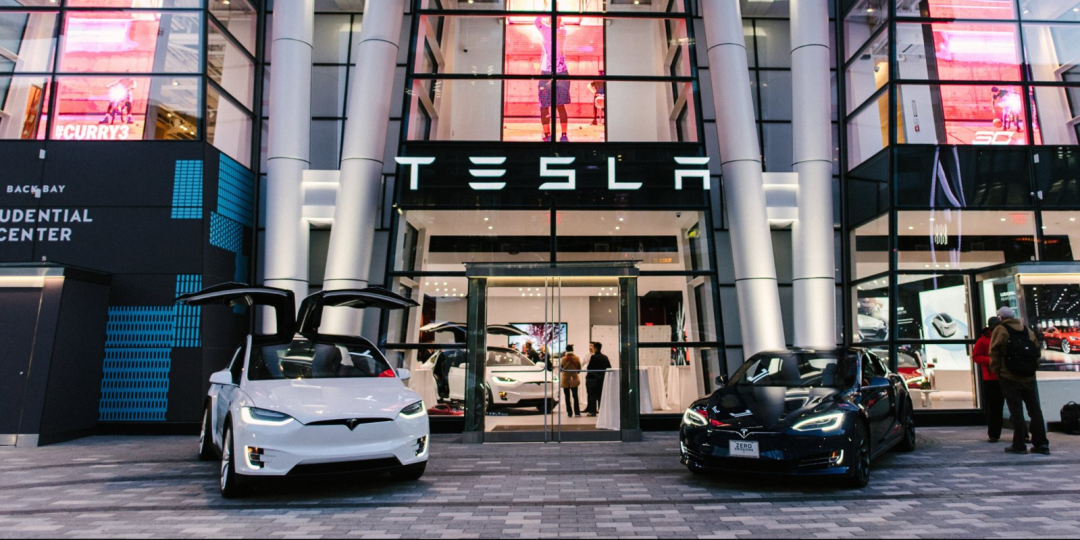
Image source: Electrek
2020 has brought us too many historical records, and it is the same for the manufacturing industry. The Chinese automobile market has begun to recover rapidly with the strongest vitality, and as the world’s most important automobile market, the performance of the Chinese market will further compel all automakers to carry out strategic transformation.
Tesla will use a dominating force to promote industry changes, accelerate the rapid elimination of new force automotive enterprises, push for the rapid iteration of Chinese brands, and the entire industry will be disrupted faster, thereby creating a brand new automotive world.
This article is a translation by ChatGPT of a Chinese report from 42HOW. If you have any questions about it, please email bd@42how.com.
